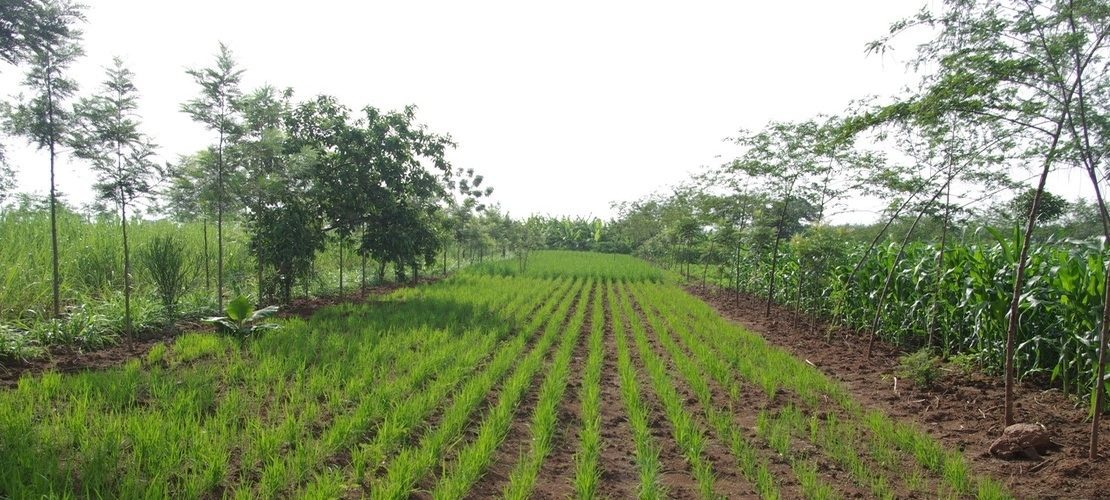Table of Contents
The Ministry of Environment, Forest, and Climate Change (MoEFCC) has introduced updated guidelines for the Green Credit Scheme to enhance environmental sustainability and increase green coverage across India. This initiative has received widespread acclaim from various sectors. In this article we will discuss the latest updates on the New Green Credit Scheme, designed to incentivize sustainable business practices. Learn about the revised eligibility criteria, application process, and benefits for companies aiming to reduce their carbon footprint
What is The Green Credit Scheme (GCS)?
The Green Credit Scheme (GCS) is an initiative designed to encourage businesses to adopt environmentally sustainable practices. It provides a framework for companies to earn “green credits” by implementing measures that reduce their environmental impact, such as reducing carbon emissions, minimizing waste, or conserving energy.
These credits can be used to offset environmental impacts, and in some cases, they may be traded or sold, providing a financial incentive for businesses to adopt greener operations. The goal of the Green Credit Scheme is to promote sustainability and environmental responsibility across industries, aligning corporate goals with global efforts to combat climate change.

Under the Green Credit Scheme, businesses are typically required to submit evidence of their sustainability efforts, which can include energy audits, waste reduction initiatives, or the use of renewable resources. The scheme also sets guidelines for the evaluation of these efforts, ensuring that only genuine environmental actions are rewarded.
Recent updates to the scheme may introduce new criteria or financial incentives to make the program more accessible and beneficial for companies of all sizes. By participating, companies not only contribute to environmental preservation but also enhance their brand reputation and potentially lower operational costs in the long term.
Encouraging Behavioral Change:
The revamped Green Credit Scheme is designed to encourage a shift in behavior and incentivize the provision of environmental and ecosystem services across different sectors. This initiative aligns with the principles of LiFE, as advocated by Prime Minister Narendra Modi during COP26 in Glasgow.
The new guidelines aim to promote tree plantation, improve ecosystem services, and encourage sustainable practices across various sectors. Here are the key aspects of the updated guidelines:
Expansion of Green Cover:
The Green Credit Scheme places a strong emphasis on large-scale tree plantation initiatives as a key component of its sustainability efforts. The scheme encourages both urban and rural communities to actively engage in planting trees, with a particular focus on restoring and expanding green spaces. This initiative aims to address environmental challenges like deforestation, soil erosion, and urban heat islands, while promoting climate resilience. By involving local communities, the scheme helps to foster a collective sense of responsibility towards nature and empowers individuals to contribute to environmental restoration.
In line with its goal of enhancing biodiversity, the scheme prioritizes the planting of native tree species that are better adapted to local ecosystems. Native plants play a crucial role in preserving and improving biodiversity by providing habitats for local wildlife, supporting pollinators, and maintaining soil health. By focusing on the reforestation of indigenous species, the scheme not only helps restore ecosystems but also strengthens the overall health of the environment, ensuring that both urban and rural areas benefit from improved ecological balance and long-term sustainability.sity and ecosystem health.
Incentives for Ecosystem Services:
Under the Green Credit Scheme, individuals, communities, and organizations that contribute to valuable ecosystem services are rewarded with green credits. These services include activities such as carbon sequestration, which helps mitigate climate change by capturing and storing CO2, as well as water conservation efforts that preserve local water resources. Additionally, actions that enhance soil fertility through sustainable farming practices or reforestation are also recognized. By participating in these eco-friendly practices, stakeholders can actively support environmental health while receiving tangible incentives in the form of green credits.
These green credits can be traded or redeemed for monetary benefits, providing a financial reward for those who prioritize environmental stewardship. This creates an economic incentive for sustainable practices, allowing entities to capitalize on their contributions to ecosystem restoration and conservation. The flexibility to trade or redeem credits also encourages broader participation, as individuals and organizations can monetize their environmental efforts, making the Green Credit Scheme a valuable tool for both ecological and economic sustainability.
Integration with LiFE Principles
The updated guidelines of the Green Credit Scheme align closely with the LiFE (Lifestyle for Environment) principles introduced by Prime Minister Narendra Modi. LiFE promotes a shift towards more sustainable and environmentally-conscious living, encouraging individuals and communities to adopt habits that reduce their ecological impact.
By incorporating these principles, the Green Credit Scheme not only aims to reward businesses and organizations for their environmental actions but also seeks to inspire broader societal changes. The focus is on adopting a lifestyle that respects the planet’s resources and supports a cleaner, greener future for all.
The scheme specifically encourages practices that prioritize environmental preservation, such as reducing waste, conserving energy, and promoting sustainable consumption. By aligning with the LiFE principles, it reinforces the idea that sustainable actions are not just the responsibility of governments and businesses but of every individual.
Whether through reducing personal carbon footprints, engaging in resource conservation, or supporting eco-friendly initiatives, the scheme emphasizes that even small lifestyle changes can collectively make a significant difference in the global effort to reduce environmental degradation.
Sector-Wide Applicability
The Green Credit Scheme targets a wide range of sectors, including forestry, agriculture, industry, and urban development, recognizing the need for sustainability across various aspects of society. In the forestry sector, it promotes reforestation and conservation efforts, while in agriculture, it encourages sustainable farming practices that reduce pesticide use, promote soil health, and protect water resources.
In industry, the scheme incentivizes the adoption of clean technologies that minimize environmental impacts, such as reducing emissions and waste. Similarly, urban development initiatives focus on creating greener cities through improved infrastructure, green spaces, and eco-friendly buildings.
The scheme specifically encourages the integration of environmentally sustainable technologies and practices across these sectors. This includes initiatives like effective waste management systems, which help reduce landfill waste and promote recycling, as well as water conservation efforts to ensure sustainable water use in agriculture and urban settings.
Additionally, it targets improvements in air quality through the adoption of cleaner industrial processes and the promotion of renewable energy sources. By encouraging these practices, the Green Credit Scheme not only helps mitigate environmental damage but also paves the way for long-term ecological and economic sustainability.r quality improvement.
Monitoring and Verification
A robust monitoring and verification system will be a cornerstone of the Green Credit Scheme, ensuring that participants meet the program’s objectives and adhere to its guidelines. This system will involve regular audits and assessments to track the progress of green initiatives, verifying that the claimed environmental actions, such as carbon sequestration, water conservation, and waste reduction, are being effectively implemented. By maintaining a clear, transparent process for monitoring, the scheme can ensure that businesses, organizations, and individuals are genuinely contributing to sustainability goals.
The ongoing assessments will also measure the actual impact of these initiatives, providing data on how well they are addressing environmental issues such as climate change, resource depletion, and biodiversity loss. This system of verification not only ensures accountability but also helps to refine and improve the scheme over time. With regular updates based on these audits, the Green Credit Scheme will be able to maintain its effectiveness, adapting to new challenges and ensuring that participants receive fair recognition and rewards for their environmental efforts.
Community Engagement and Education
The Green Credit Scheme places a strong emphasis on community involvement, recognizing that widespread participation is crucial for driving lasting environmental change. To engage the public, the scheme supports awareness campaigns and educational programs that highlight the importance of sustainable practices.
These initiatives aim to inform citizens about the environmental challenges we face and the role they can play in addressing them, from reducing waste to conserving natural resources. By making sustainability accessible and understandable, the scheme empowers individuals to take concrete actions in their daily lives.
Additionally, the scheme encourages participatory planning, allowing communities to have a direct say in local environmental projects and initiatives. This collaborative approach fosters a sense of ownership and responsibility, encouraging citizens to become active stewards of their environment. By instilling a culture of environmental stewardship and responsibility, the Green Credit Scheme not only motivates individuals to adopt greener lifestyles but also strengthens community ties, creating a collective effort towards building a more sustainable future for all.
Financial and Technical Support
To accelerate the adoption of green initiatives, the government will provide significant financial and technical support to local entities, NGOs, and private organizations that are involved in environmental projects. This support will come in the form of grants and subsidies, which can help cover the costs of implementing sustainable practices, whether it’s for a reforestation project, waste management system, or renewable energy installation.
These financial incentives are designed to reduce the barriers to entry for organizations seeking to contribute to environmental preservation, making green solutions more accessible, especially for smaller entities that may lack the necessary resources.
In addition to financial support, the scheme will offer access to advanced technologies and expert guidance, helping organizations stay at the forefront of sustainable innovation. This includes providing knowledge on the latest environmental technologies, from energy-efficient systems to water-saving solutions, and offering expertise in areas like monitoring, data analysis, and impact assessment.
By equipping local organizations with both the financial and technical tools they need, the government ensures that green projects can be executed effectively and have a lasting, measurable impact on sustainability.
Collaboration with Private Sector
The Green Credit Scheme actively encourages collaboration with the private sector by leveraging Corporate Social Responsibility (CSR) initiatives for environmental conservation. Recognizing the significant influence and resources of businesses, the scheme incentivizes private companies to invest in green projects that align with their CSR goals.
Whether it’s through supporting renewable energy projects, funding reforestation efforts, or adopting eco-friendly manufacturing processes, the scheme helps companies channel their CSR efforts into tangible environmental outcomes. This not only benefits the environment but also enhances the company’s reputation, creating a win-win scenario for both business and society.
By providing green credits and other incentives, the scheme motivates businesses to adopt sustainable practices across their operations. Companies are encouraged to integrate environmental responsibility into their core business strategies, whether it’s through reducing their carbon footprint, improving waste management, or sourcing materials more sustainably.
The integration of sustainability into business practices helps create long-term value, not just for the environment, but for businesses themselves, as they position themselves as leaders in the growing green economy. Through such collaborations, the Green Credit Scheme fosters a strong partnership between the public and private sectors in the fight against climate change and environmental degradation.
Focus on Innovation
The updated guidelines of the Green Credit Scheme place a strong emphasis on promoting innovation in green technologies and sustainable practices, recognizing that technological advancements are key to achieving long-term environmental goals.
The scheme supports research and development (R&D) efforts in areas such as renewable energy, waste recycling, and water purification, which are critical to addressing pressing environmental challenges. By funding and fostering innovation, the scheme helps accelerate the development of new solutions that can be scaled up to benefit industries, communities, and ecosystems at a larger level.
Through this focus on R&D, the Green Credit Scheme not only drives technological progress but also aims to make these green solutions more accessible and efficient. Innovations in renewable energy, such as solar and wind technologies, can help reduce reliance on fossil fuels, while advancements in waste recycling and water purification can lead to better resource management and reduced pollution.
By encouraging the growth of these technologies, the scheme ensures that sustainable practices become more cost-effective and widely adopted, fostering long-term environmental sustainability and economic growth.
Recognition and Rewards
Exemplary contributions to environmental conservation and sustainability will be recognized and rewarded. Awards and certifications will be given to individuals and organizations demonstrating outstanding commitment to the scheme’s goals.
These updated guidelines for the Green Credit Scheme aim to create a comprehensive and collaborative approach to environmental sustainability. By fostering behavioral change, incentivizing green initiatives, and promoting sustainable practices, the scheme envisions a greener and more resilient future for India.







